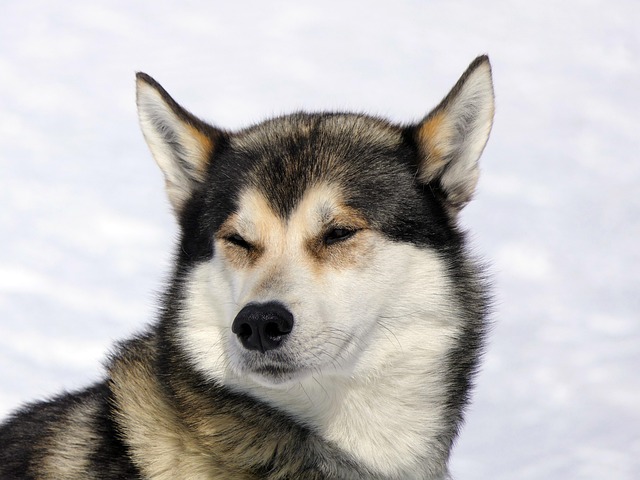
What is glaucoma in a dog?
You might notice your dog squinting more at mealtime or avoiding bright sunlight—these small changes could be early signs of a serious eye condition.
Those striking blue or multi - colored eyes of Siberian Huskies are one of their most captivating features, but they also make these dogs prone to certain eye conditions. Understanding these diseases isn’t just about keeping your pup’s gaze bright—it’s crucial for their overall health and well - being.
One common issue is Progressive Retinal Atrophy (PRA). This genetic disorder gradually damages the retina, leading to vision loss. In the early stages, you might notice your Husky struggling in low - light situations. Some regions have regulations regarding breeding dogs with genetic conditions like PRA to prevent the spread of hereditary diseases. If you suspect PRA, it’s vital to consult a vet; ignoring it could be considered neglect under local animal welfare laws.
Another prevalent problem is Cataracts. Just like in humans, cloudy patches form on the eye’s lens, blurring vision. Cataracts can develop due to age, injury, or genetics. Many pet insurance providers in various areas cover cataract surgeries, but it’s important to check the fine print of your policy. If your Husky’s eyes start looking cloudy, don’t wait—seek veterinary advice promptly.
Corneal Dystrophy is also seen in Huskies. This condition causes abnormal deposits to form on the cornea, the clear front part of the eye. It might seem like your dog has a scratch, but it’s actually a structural issue. In some communities, proper eye care is part of responsible pet ownership, and neglecting corneal problems can lead to legal issues if they cause unnecessary suffering to the animal.
 Dry Eye, or Keratoconjunctivitis Sicca (KCS), occurs when the eyes don’t produce enough tears. You’ll notice excessive eye discharge, redness, and your Husky rubbing their eyes. In many regions, vets are required to follow specific treatment protocols for KCS, which often involve prescription eye drops. Regularly checking your dog’s eyes for signs of dryness is not only good care but also aligns with local pet health standards.
Dry Eye, or Keratoconjunctivitis Sicca (KCS), occurs when the eyes don’t produce enough tears. You’ll notice excessive eye discharge, redness, and your Husky rubbing their eyes. In many regions, vets are required to follow specific treatment protocols for KCS, which often involve prescription eye drops. Regularly checking your dog’s eyes for signs of dryness is not only good care but also aligns with local pet health standards.
Glaucoma is a more serious condition that raises the pressure inside the eye. It can cause severe pain and rapid vision loss. Some areas have strict regulations on the use of medications to treat glaucoma in pets, ensuring proper dosages and safety. If your Husky’s eye looks swollen, or they seem unusually sensitive to light, get them to a vet immediately—this is a medical emergency.
When it comes to diagnosing eye diseases, your vet might use various tests like an ophthalmic exam or genetic screening. In many places, animal clinics must follow strict procedures for these tests to ensure accurate results and patient safety. It’s important to choose a licensed vet who is experienced in treating eye conditions in Huskies.
Preventive care plays a big role too. Regularly clean around your Husky’s eyes with a vet - approved wipe to remove debris. Keep them away from potential eye irritants like chemicals or rough surfaces. And most importantly, schedule annual eye check - ups with your vet. In many communities, staying on top of your pet’s health is not only a personal responsibility but also in line with local pet care regulations.
Caring for your Siberian Husky’s eyes means watching for the slightest changes and taking action quickly. By being informed about these common eye diseases, following local pet care laws, and working closely with your vet, you can help your beloved Husky see the world clearly for years to come.

You might notice your dog squinting more at mealtime or avoiding bright sunlight—these small changes could be early signs of a serious eye condition.

Let’s set the scene: It’s a sweltering Phoenix afternoon—105°F outside—and you rushed your 2-year-old Lab mix, Cooper, on a quick walk to “get it over with.”

Let’s get real: You’re in your Miami apartment, watching your 3-year-old Corgi, Loki, struggle to climb the stairs to your second-floor unit.

Many dog owners brush off occasional scratching as just “dog behavior,” but persistent itching often signals something more—like a food allergy.

You might first notice your dog scratching more than usual—chewing at their paws until the fur looks thin, or rubbing their face against the couch nonstop.

Let’s be real: You’re standing in your Chicago apartment, watching your 3-year-old Beagle, Max, huff and puff just to climb onto the couch.